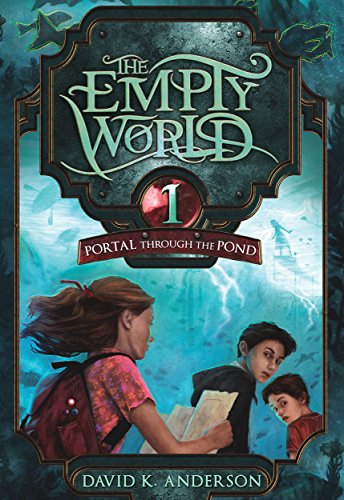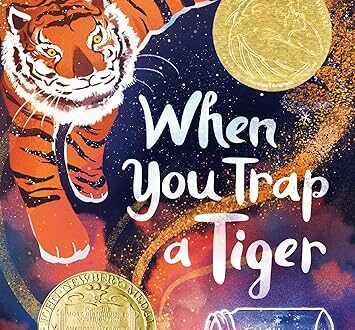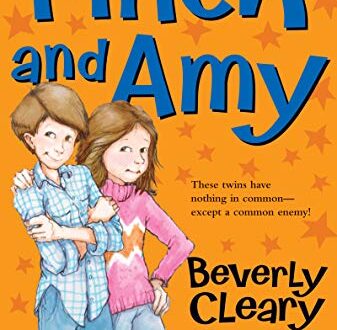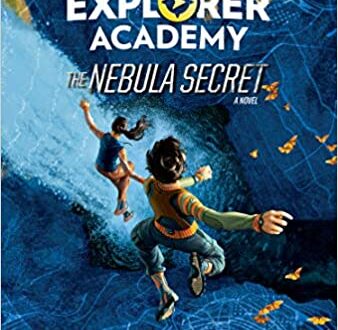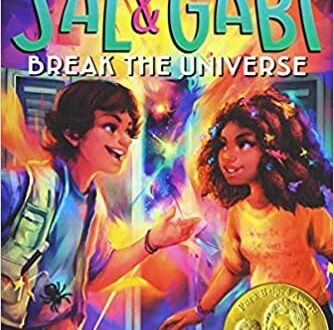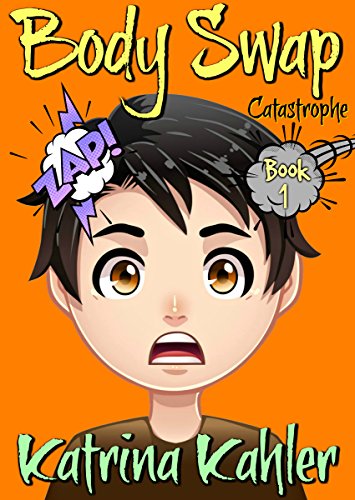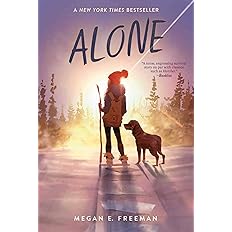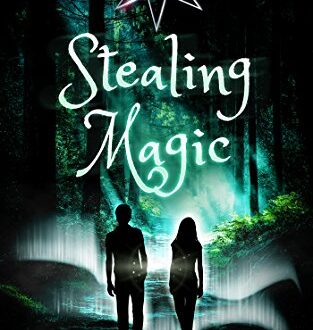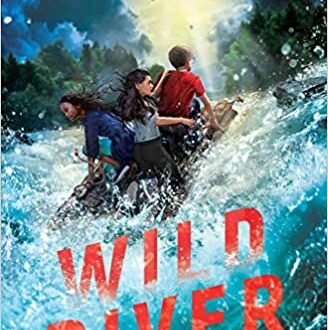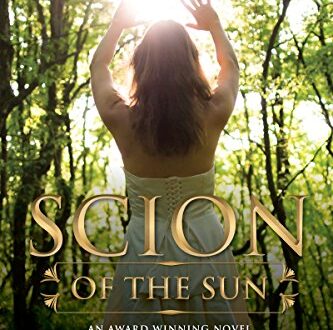-
The Fun and Magic of Writing Poetry!
Hello, young wordsmiths! Are you ready to embark on a poetic journey filled with rhythm, imagery, and the beauty of language? Today we’ll explore poetry’s fascinating world. Whether you’re a budding poet or simply curious about the art of expressing yourself through verse, we’ll explore the power of poetry and discover how it can ignite your imagination and touch hearts. Get ready to unleash your creativity, play with words, and unlock the magic that lies within you. So, grab your pens, open your minds, and let’s venture into the realm of poetic expression together!
Writing poetry is not as hard as you might think it is. Especially if you know a few tips about how to go about writing a poem. Poetry writing challenges you to really think about words and images. Words that you want to use to make the reader think. And the images that you want to create in the reader’s mind.
But where and how do you begin when you don’t know how to write a poem?
Well, you could start out with a clever poem, which is called an acrostic poem. You write a word on a piece of paper—like DOG. Then start each line with one letter in your word. For example, an acrostic poem for “dog” could look like this: Devoted furry buddy / On my bed is sleeping / Greatest of pets.
Once you have had fun with writing acrostic poems, you could then try writing 3-line poems called “haiku.” They are of Japanese origin. The first and final lines have five syllables each, while the second line has seven. Often they describe a concrete object or image, such as this one about a cat: Tired cat sleeps all night. / He needs lots of rest for a / Long day of napping. The very short format requires you to consider your word choices very carefully. But they can create a lot of impact.
Limericks are short, 5-line poems that have a particular rhyme scheme, where the first two lines and the last line rhyme, with a different rhyme sound for the middle two lines: AABBA. For example: A talkative man from Seattle / would spend his days speaking to cattle. / When asked what he said, / one old cow shook her head, / and replied, “Why it’s nothing but prattle! Because of their strong beat and heavy use of rhyming sounds, limericks are a lot of fun for readers to read or recite aloud.
Here are some tips to help you get started writing poetry.
Brainstorming. There are a variety of brainstorming activities you can do to help generate ideas for poems. Try to keep your audience in mind when brainstorming.
Use all your senses when writing. Writers often focus most heavily on sight, but your other senses also provide the type of vivid detail that readers enjoy. Think about taste, smell, hearing, and touch as well.
Write about feelings. Poetry can help readers explore their own feelings and learn about those of others.
Create a “found poem.” Go through a magazine, newspaper, or book and highlight several dozen words you find interesting or appealing. You don’t have to have a particular reason for why you like those words. Once you’ve found between 20-50 words, arrange the words into a poem. You can add in new words where needed.
Take a nature walk. As you explore, note things that interest you, such as the weather or scenery. Write your ideas in a notebook. When you get back home, decide on what notes to use in the poem. The poem can tell a story or just describe a scene or a feeling. Use specific, concrete words to describe what you see and feel.
Be adventurous! You can write about anything you can imagine. Everyday experiences are often excellent subjects for poems. But you could just as easily write a poem about a dragon or a unicorn.
Be patient with yourself. Writing takes a lot of time and practice. You may not like the poems you produce at first, but keep writing. You will get better!
AIME
-
Portal Through the Pond (Empty World Saga Book 1)
They said her grandfather was dead. They said her grandmother was crazy. Christy knows they’re wrong.
When her grandmother dies, 13-year-old Christy inherits an old family secret: the pond behind her house is in fact a portal to another world. What’s more, she learns that her grandfather went through the portal when he mysteriously “disappeared” nine years ago. Christy tries to respect her grandmother’s final wishes and not go exploring, but when a classmate named Rob falls into the pond, she has to act.
Since no one would believe her if she told them the truth about the pond, Christy arranges her own rescue party. In order to rescue Rob, she’ll have to brave a bizarre alien landscape, evade hostile creatures, and protect Danny, the boy from next door who followed her through the portal.
Meanwhile on Earth, the grown-ups launch a frantic search, and they’re willing to drain the pond to find out what happened. Will Christy be able to find her grandfather, rescue Rob, and return safely to Earth before she becomes a permanent resident of the Empty World?
From author David K. Anderson for Readers 8-13.
-
Riding the Waves—The Thrilling World of Surfing!
Are you ready to embark on an exhilarating journey into the thrilling world of surfing? Grab your boards and prepare to catch the ultimate adventure on the water. Read on as we dive into the art of riding the waves, exploring the excitement and joy that comes with harnessing the power of the ocean. Surfing is a sport that requires skill, courage, and a deep connection with the sea. So, wax up your boards, strap on your leash, and get ready to embrace the endless possibilities that await you on the surf.
Surfing is an ancient sport first described by European explorers of the South Pacific. Just like today, both men and women took part in surfing. Unlike today, they surfed wearing no clothes.
Surfing remained a hobby more than a sport until Olympic athlete Duke Kahanamoku popularized it in the early 1900s. Inexpensive new materials like plastic and fiberglass were introduced to surfboard design in the 1940s, making surfing even more popular and widespread. Today surfing is found around the world.
There are four major types of waves. Rolling waves are the most familiar waves, and the type most surfers prefer because they break in a stable pattern. Dumping waves are more unpredictable and are usually limited to experienced surfers. Surging waves are the most dangerous and are most often present on steep or rocky shores. Standing waves are also called stationary waves because they are constant and do not lose strength.
The concept of surfing may be simple, but the practice is not. Surfers paddle to the surf line, or the area of open water where waves break. There, they sit on their boards and watch waves roll in to shore. When surfers see a wave they can ride, they paddle quickly to catch the rising wave. Just as the wave breaks, the surfers jump from their bellies to their feet, crouching on their boards.
Surfboards are divided into two major categories: longboards and shortboards. Longboards can be slightly wider and thicker, making them more stable and buoyant, or able to stay afloat. Shortboards are much easier to maneuver but more difficult to ride. Besides longboarding and shortboarding, athletes can also specialize in big-wave surfing, wake surfing, and bodysurfing.
The United States isn’t the only place that has surfers. Surfers overpopulate the waves off Bondi Beach in Sydney, Australia. Warm beaches like Bondi are not the only places surfers gather, surfers have dusted snow off their surfboards to chase waves off the coast of Antarctica, trekked through jungles to pristine beaches in Southeast Asia, shared the water with great white sharks in South Africa, and even ridden the “silver dragon,” the giant tidal bore of China’s Qiantang River.
Surfers are Ocean Athletes. They must know their physical skills and the environment. All surfers must be aware of weather patterns and topography or surface features of the shore. They must be strong swimmers. Surfers must also have an excellent sense of balance and be able to quickly react to changes in the environment.
If you are lucky enough to live by the ocean, maybe someday you can become a surfer and travel the world looking for the “perfect wave.”
AIME
-
Flunked (Fairy Tale Reform School Book 1)
Gilly wouldn’t call herself wicked, exactly. But when you have five little brothers and sisters and live in a run-down boot, you have to get creative to make ends meet. Gilly’s a pretty good thief (if she does say so herself).
Until she gets caught.
Gilly’s sentenced to three months at Fairy Tale Reform School where all of the teachers are former (super-scary) villains like the Big Bad Wolf, the Evil Queen, and Cinderella’s Wicked Stepmother. Harsh. But when she meets fellow students Jax and Kayla, she learns there’s more to this school than its heroic mission.
There’s a battle brewing and Gilly has to wonder…just how good these bad guys really are?
From author Jen Calonita for Readers 9-12.
-
Life on Mars—A Journey to the Red Planet!
Greetings, future astronauts, and scientists! Are you ready to embark on an out-of-this-world adventure as we delve into the captivating realm of life on Mars? Joint us as we explore the mysteries of the Red Planet, envisioning a future where humans might one day call Mars their home. So, strap on your spacesuits, fasten your seatbelts, and let’s launch into a thrilling exploration of finding life on the mysterious and captivating planet of Mars!
We all know that NASA’s rovers have been searching for signs of ancient life on the Red Planet. They analyze rocks by looking at closeups of tiny segments of rock surfaces that might show evidence of past microbial activity. Early closeups have already yielded a trove of data from Martian rocks—such as a variety of colors, sizes of grains in the sediment, and even the presence of “cement” between the grains. Such details can provide important clues about formation history, water flow, and ancient, potentially habitable Martian environments.
A key objective for the current mission on Mars is astrobiology, including the search for signs of ancient microbial life. The current rovers will characterize the planet’s geology and past climate, pave the way for human exploration of the Red Planet, and be the first missions to collect and cache Martian rock and regolith (broken rock and dust).
Astrobiology is the branch of biology concerned with the study of life on earth and in space.
Subsequent NASA missions, in cooperation with ESA (European Space Agency), would send spacecraft to Mars to collect these sealed samples from the surface and return them to Earth for in-depth analysis.
The possibility of life on Mars is a subject of interest in astrobiology because of the planet’s proximity and similarities to Earth. Scientists have found no proof of past or present life on Mars yet. Cumulative evidence suggests that in the past, the surface environment of Mars had liquid water and may have been habitable for microorganisms, but habitable conditions do not necessarily indicate life.
Mars is of particular interest for the study of the presence of early life because of its similarity to the early Earth. This is especially true since Mars has a cold climate and lacks plate tectonics or continental drift, so it has remained almost unchanged since the end of the Hesperian period. At least two-thirds of Mars’ surface is over 3.5 billion years old, and it could have been habitable since 4.48 billions of years ago, 500 million years before the earliest known Earth lifeforms. Mars may thus hold the best record of the prebiotic conditions leading to life, even if life does not or has never existed there.
The Hesperian is a geologic system and time period on the planet Mars characterized by widespread volcanic activity and catastrophic flooding that carved immense outflow channels across the surface. During the Hesperian, Mars changed from the wetter and perhaps warmer world of the Noachian to the dry, cold, and dusty planet seen today. The Hesperian Period is roughly coincident with the Earth’s early Archean Eon (4,000 to 2,500 million years ago).
The Noachian is a geologic system and early time period on Mars, characterized by high rates of meteorite and asteroid impacts and the possible presence of abundant surface water. The absolute age of the Noachian period is uncertain but probably corresponds to the lunar Pre-Nectarian to Early Imbrian periods of 4100 to 3700 million years ago, during the interval known as the Late Heavy Bombardment.
Many of the large impact basins on the Moon and Mars formed at this time. The Noachian Period is roughly equivalent to the Earth’s Hadean and early Archean eons when the first life forms likely arose. It spans 400 million years, from the end of the Hadean Eon 4 billion years ago.
While we have not found life on Mars so far, that does not mean it did not exist. Who knows? Maybe someday in the future you just might be a scientist or engineer or computer expert who helps solve that mystery.
AIME
-
BODY SWAP: Catastrophe!!!
Swapping bodies might be fun for some, but when 12-year-old Jack Stevenson wakes up from a freak accident one day and finds himself in his dad’s body, his life abruptly becomes one huge disaster after another. When he realizes that his dad will have to go to school in his place, things instantly get much, much worse. Will he be able to remain captain of the school football team, and what will happen to Holly, the prettiest girl at school? She is also the girl he has a huge crush on and is hoping to be his girlfriend. What will all his friends think of his strange behavior, and how will he ever cope with the sudden catastrophe he’s been faced with?
This hilarious book for girls and boys of all ages with have you laughing from start to finish and keep you wondering what is going to happen next.
From author Katrina Kahler for Readers 8-13.
-
Cat Behavior—Decoded
Wish you had a secret decoder that explained strange cat behavior? Get ready to decode their body language, understand their instincts, and discover the hidden messages behind those mesmerizing eyes. So, put on your detective hats, sharpen your observation skills, and let’s embark on a purr-fect journey into the captivating realm of cat behavior!
What is normal cat behavior? Stick with us and we will tell you—beginning with purring. Cats often purr when they’re feeling relaxed, but they may also purr to self-soothe if they are feeling stressed or are injured. When kittens are born, mama cats purr, creating a vibration to guide kittens to mom’s nipple to nurse. Cats will also purr to socialize with other cats and communicate with their owners that they want something.
When cats expose their bellies to us, they are saying they trust us. But when we take them up on this ‘offer’ by rubbing their bellies, they may retract it with a bite or a scratch, as it was only meant as communication.
Wagging its tail doesn’t mean the same thing that when a happy dog wags its tail. With a cat, the thrashing tail means ‘stop what you are doing or I am going to get angry and might bite you.’ Or else your cat is in hunting mode. Then you need to stay out of his way while he zeroes in on his prey.
You might have noticed that your cat loves napping and seemingly sleeps all the time. This trait has developed so that they can conserve energy for hunting.
Besides purring and meowing, another common cat noise is chirping. You might find your cat chirping as it stares out the window from the perch at a bird or when it greets a fellow feline. A cat’s chirp tends to mean one of two things: Its hunting instincts are activated as it spies a bird, bug, mouse, or toy. As it chirps, the cat’s tail twitches back and forth and its pupils dilate. Or, a cat may also chirp when it’s excited to see someone, be it a fellow cat…or you.
If you’ve spent any amount of time with a cat, you’ve likely seen them bat at something on a table until it falls off. This could be because of boredom, attention-seeking, hunting, or playfulness. They respond to the outcomes, too. If something rolls, it may become prey ‘running away’ and they will chase it. When you suddenly stop what you’re doing to run to your cat, your cat receives a reward that it can test over and over and over again.
Scratching—is a deeply ingrained behavior in cats. Cats have scent glands on their paws, and releasing the odor allows them to “mark” objects as their own. Other reasons include releasing energy or excitement, sharpening their claws, and simply because scratching is fun and feels good.
A cat will lick their humans to show care and affection. When your cat licks you, they are creating a special social bond with you. This licking behavior stems from kittenhood when a mama cat licks her kittens to groom and show affection. Along with licking you, cats tend to lick themselves—a lot! This is because they’re self-cleaning creatures, and their grooming habits are quite impressive. This means you don’t need to worry about routine baths and grooming in the same way you do for a dog.
You’re sitting there minding your own business, and here comes your kitty making all sorts of weird noises and carrying an object in her mouth. If you’re lucky, it’s one of her favorite toys, but cats are also known to bring their humans dead bugs, rodents, and birds. Your cat may bring you a prey item—such as a toy or mouse—presenting it to you as a gift. This is your cat saying you are part of their pack and they want to make sure you are well fed. They may also do this to repay you for feeding them, mimic their mother, or give you a gift.
Kittens use meows to communicate with their moms, but grown cats employ them solely to communicate with humans. Some cat breeds are chattier than others, but if your cat goes from not-that-frequent to frequent talking, it could be a sign that something’s off. A vet visit can help you figure out the issue.
Okay cat detective, now that you can decode your cat’s behavior—what is your cat saying to you?
AIME
-
Anyone Can Draw Anime: Easy Step-by-Step Drawing Tutorial for Kids, Teens, and Beginners.
This is a great how to draw book for kids!
In this beginner’s drawing book, every mini drawing lesson is broken down into easy-to-follow step by step instructions.
This How to Draw Anime: Step by Step beginners drawing for kids is the only sketch book you’ll need to turn your creativity into artistic confidence, by learning how to draw cool stuff!
From author Robby Bishop for Readers 8-18.

